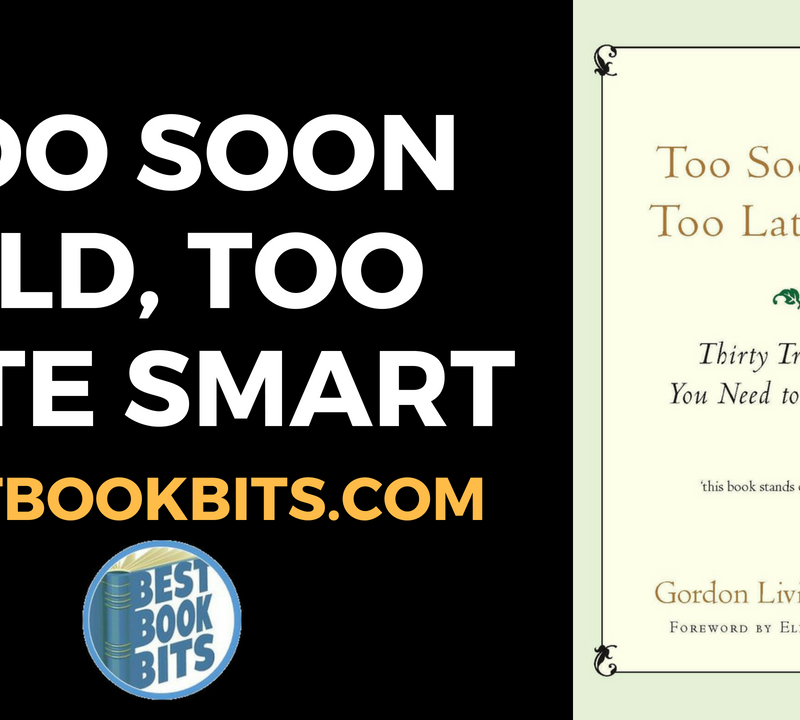★DOWNLOAD THIS FREE PDF SUMMARY HERE https://go.bestbookbits.com/freepdf
? MY FREE BOOK TO LIVING YOUR DREAM LIFE” https://go.bestbookbits.com/first-seven-steps
? SPONSOR BESTBOOKBITS BY USING PATREON https://www.patreon.com/bestbookbits
? SUPPORT BESTBOOKBITS BY CLICKING THE LINKS BELOW
-
- 150 PDF Summaries: https://go.bestbookbits.com/150
- Coaching Program: https://go.bestbookbits.com/coaching
- Subscribe to My Channel: https://www.youtube.com/bestbookbits?sub_confirmation=1
- Website: https://bestbookbits.com
- Instagram: https://www.instagram.com/bestbookbits
- Spotify: https://open.spotify.com/show/0q8OW3dNrLISzyRSEovTBy
- Facebook: https://www.facebook.com/michaelbestbookbits
- Book Club: https://bestbookbits.com/bookclub/
- Mailing List: https://mailchi.mp/d1dfc1907cdb/bestbookbits
Learn why big picture-holistic thinking is, and will become even more important in the future.
People have assumed from ancient times about a division in our brain. Namely, a left and a right hemisphere. Modern science has supported a neurological divide although we know that in every activity we engage in both hemispheres cooperate.
While there is cooperation, we also know that each hemisphere takes a dominant role in certain activities.
The left hemisphere specializes in breaking things into details, while the right hemisphere is better at providing a broader picture.
A good example of left brain activity is language. To process language while we read or listen, the left brain has to break down symbols or words. When complex connections have to be made to understand, however, the right hemisphere jumps in, for example when irony or metaphors are used.
Reasoning is also somewhat differentiated between hemispheres. The left side tends to react to things learned in the past, while the right side interprets intuitive knowledge like an angry facial expression, which all cultures inherently know to be negative.
Left-directed thinking has been praised historically
Once, people thought that the left hemisphere is what differentiates us from animals because we can solve analytical tasks. Left-directed thinking is sequential, functional, literal, textual and analytic. Right-directed thinking is characterized by more contextual, holistic, metaphorical, aesthetic, and synthetic thinking.
Left-directed thinking has been appreciated more than right-side thinking and considered to be better for a successful approach to life. That’s why our school exams reward logical, linear thinking to arrive at a single answer in the time allotted, similar to a computer. Nowadays, however, the importance of right-directed thinking is growing importance.
The conceptual age
The information Age has brought us economic growth and rising living standards. The reason is that as education became increasingly available to everyone, more and more people were able to follow this inherently left-brain method of specializing in knowledge and become well-paid white-collar workers.
The direction is changing now, however. As the marketplace becomes increasingly crowded by highly specialized left-brain white-collar workers, it becomes more and more competitive and thus, harder to differentiate oneself in the crowd and gain economic value.
Right-brained individuals meanwhile are becoming more and more prized, as they excel in design, story, empathy, symphony and meaning, which is not easily achievable by left-brainers.
Someone who develops aptitude in those areas gains a crucial competitive advantage in today’s crowded marketplace. Another reason for the importance of right-directed thinking is that in a highly logical, right-sided society, people increasingly search for meaning, purpose and yearn for the immaterial.
This move indicates that we move from an Information Age into the so-called Conceptual Age. An age where there is a high demand for skills that are of high concept, meaning the ability to combine unrelated ideas into new creations. This demand is already visible as creativity is highly valued and more and more students get taught classes on developing right-sided things like creativity.
Design provides utility and significance
Design gains more and more importance in our modern world and especially the industry. Research at the London Business School shows that for every percent of sales invested in product design, there is a rise in profits of about 3 to 4% for the company.
Research also indicates that improving the design of a school’s physical environment can increase the performance of students. People are also becoming more aware of good design, with a flooded marketplace where functionality is the norm, what makes things stand out is its design. Good design provides utility
Good design provides utility and significance. The utility is the task a certain thing is supposed to do, and significance is the impact the thing provides outside of its utility. For example, two smartphones may both be able to perform calls (utility), but one phone is aesthetically better and functionally more comfortable to use (significance).
Storytelling gives more context and meaning to facts
Throughout history, storytelling has been an integral part of the transmission of information and the human experience. We tend to remember stories far better because they convey context and meaning, whereas dry facts are harder to recall.
We can relate to stories and see our lives as a collection of stories. Facts have become less relevant in the Information Age because they can easily be accessed online.
As we move into the Conceptual Age, the ability to place facts in context and deliver them as a story becomes more relevant.
This is reflected in business, where being able to tell a story is increasingly crucial to success. Stories also help companies to stand out from the crowded marketplace. This is because people are more able to relate to companies and products if they hear about them as stories.
Organizational storytelling is a new movement where organizations collect stories their employees tell so that the company has relatable human stories to share.
Xerox for example, instead of relying on manuals for their technicians, use the stories they collected from their technicians about repairing machines to teach others.
Synergy: The whole is greater than its parts
The dominant type of knowledge acquisition in the past was taking things apart and memorizing the individual pieces it consists of. The education system works like this also, consisting in a great part of disassembling and memorization.
But today, information in the form of facts is available with the tip of a finger or just by a voice command through an intelligent assistant in our smartphones, or even watches and glasses. No longer is there a need to store individual facts in our memory.
What is much more important and valuable is putting together individual pieces of information into something bigger, much like a symphony. A symphony is put together from a great variety of instruments by a composer or music producer.
The ability to think in the big picture also is a big advantage in the industry, where the life cycle of new products becomes increasingly short. This means that companies are constantly forced to come up with innovative ideas. The best innovators are those able to combine things from many different areas, often completely unrelated areas, and combine them into good ideas.
George de Mestral observed how burdock seeds stuck to his dog’s fur thanks to tiny hooks that covered them, which lead him to invent Velcro.
A study of self-made millionaires showed that on average they were more likely to be dyslexic. They struggle with linear reasoning but excel at broader, big-picture thinking – a trait that apparently makes them more successful.
Big-picture thinking can also bring more happiness. Those who are able to see that stress and worries are just small parts of the whole are less likely to get dragged down by them.
Empathy, Playfulness, and Meaning
While a big part of our modern industry is already taken over by machines and this progress seems to keep accelerating, humans have something which is likely not soon replaceable by machines, empathy. Many clients and patients want to deal with someone who has empathy, for example when they visit their lawyer or doctor.
Playfulness and humor are another big factors which contribute to better human relations, better workplace experience, and less stress. Humor is generated in the right-side of the brain because to understand humor we need context, seeing things from new angles and the bigger picture.
Increasingly more people seek to fulfill their lives with meaning and purpose. This is why spirituality is on the rise. Studies have found that increased spirituality can improve maladies and reduce the risk of suicide. People who regularly worship (feel gratitude) also have been found to live longer than others. These findings affect how medical schools teach. Now many physicians take courses on spirituality.
To sum it up: The ability to think in themes of the bigger picture become increasingly important for economical advantage, happiness and a fulfilled life.
★DOWNLOAD THIS FREE PDF SUMMARY HERE https://go.bestbookbits.com/freepdf
? MY FREE BOOK TO LIVING YOUR DREAM LIFE” https://go.bestbookbits.com/first-seven-steps
? SPONSOR BESTBOOKBITS BY USING PATREON https://www.patreon.com/bestbookbits
? SUPPORT BESTBOOKBITS BY CLICKING THE LINKS BELOW
-
- 150 PDF Summaries: https://go.bestbookbits.com/150
- Coaching Program: https://go.bestbookbits.com/coaching
- Subscribe to My Channel: https://www.youtube.com/bestbookbits?sub_confirmation=1
- Website: https://bestbookbits.com
- Instagram: https://www.instagram.com/bestbookbits
- Spotify: https://open.spotify.com/show/0q8OW3dNrLISzyRSEovTBy
- Facebook: https://www.facebook.com/michaelbestbookbits
- Book Club: https://bestbookbits.com/bookclub/
- Mailing List: https://mailchi.mp/d1dfc1907cdb/bestbookbits













